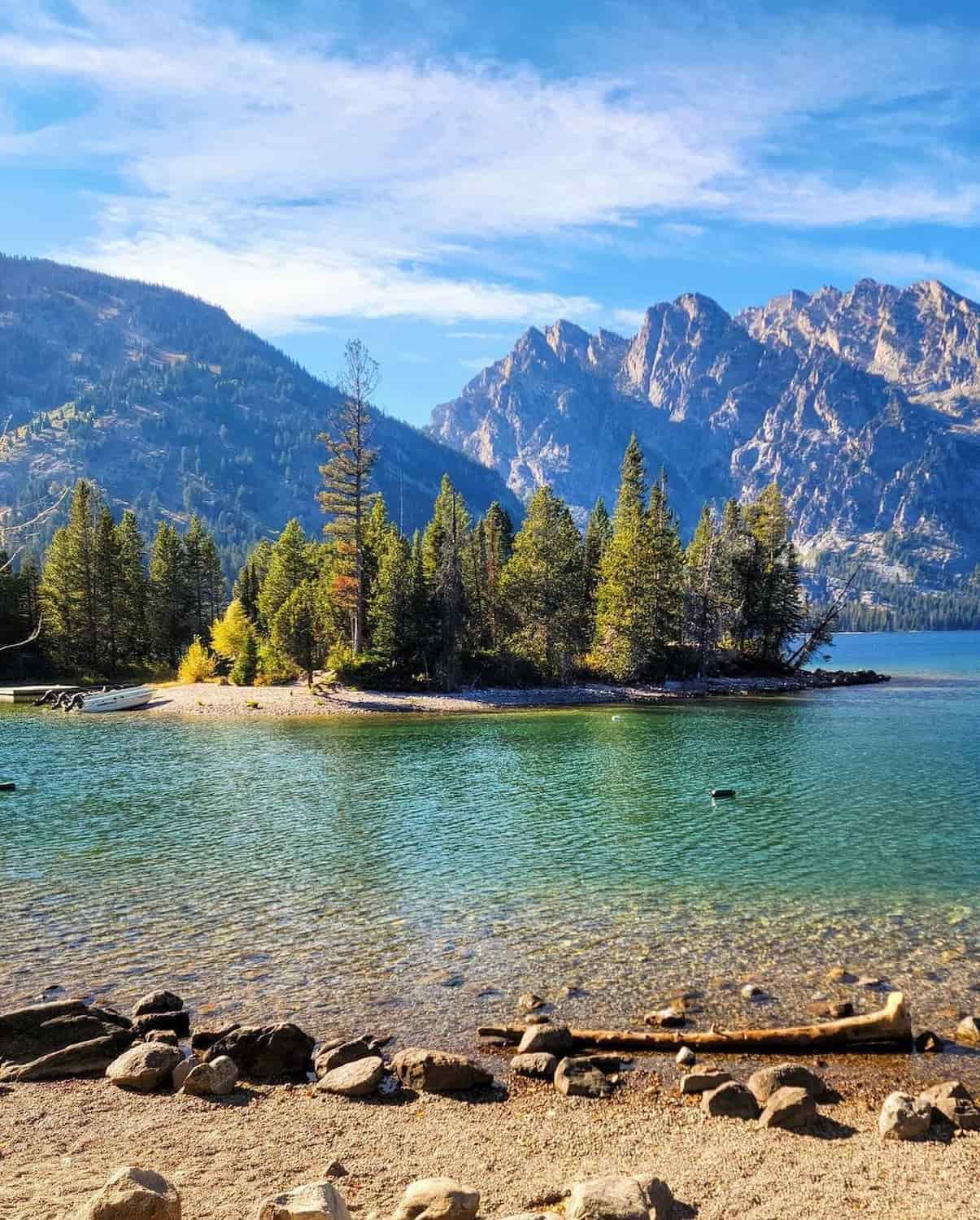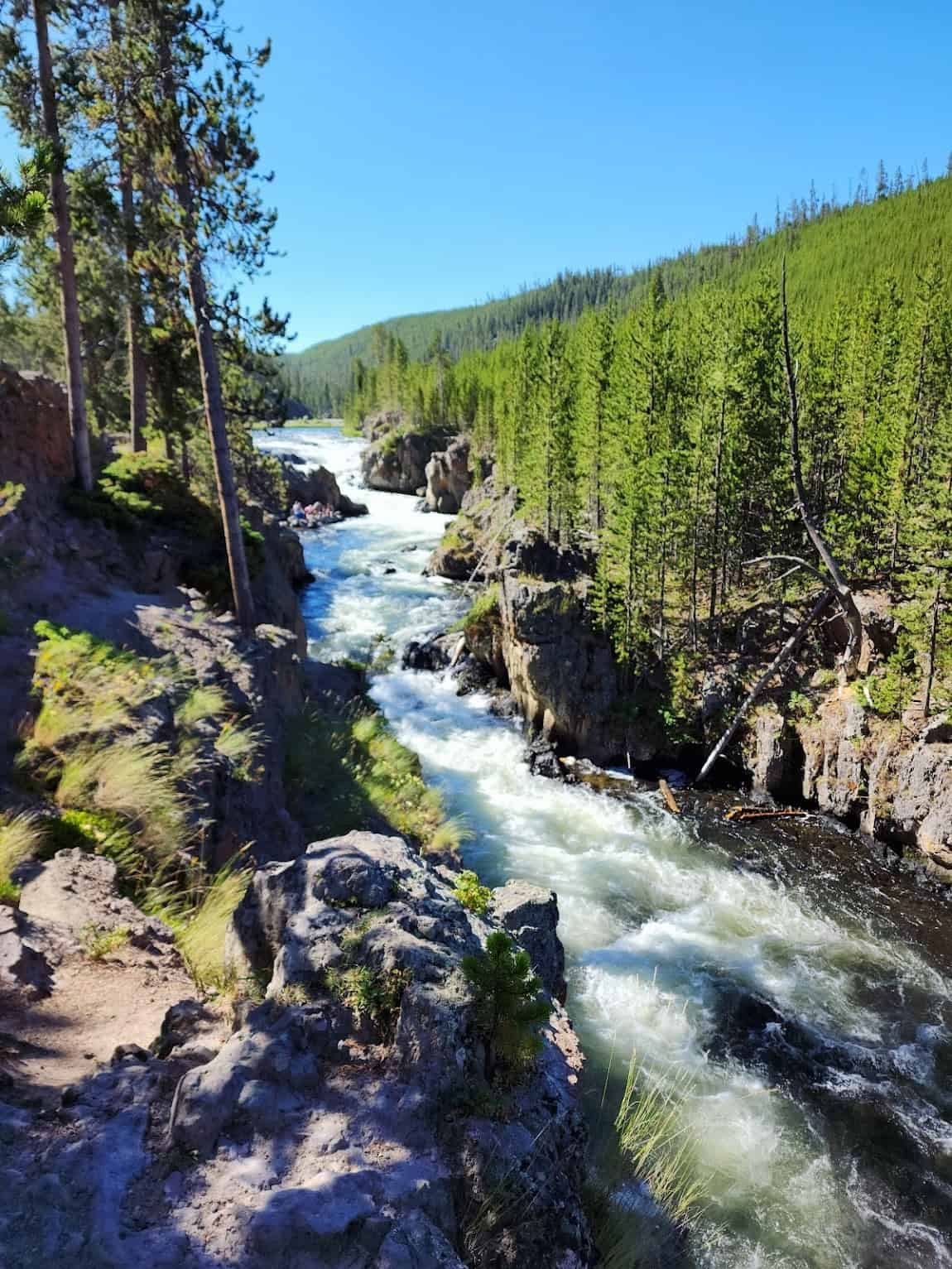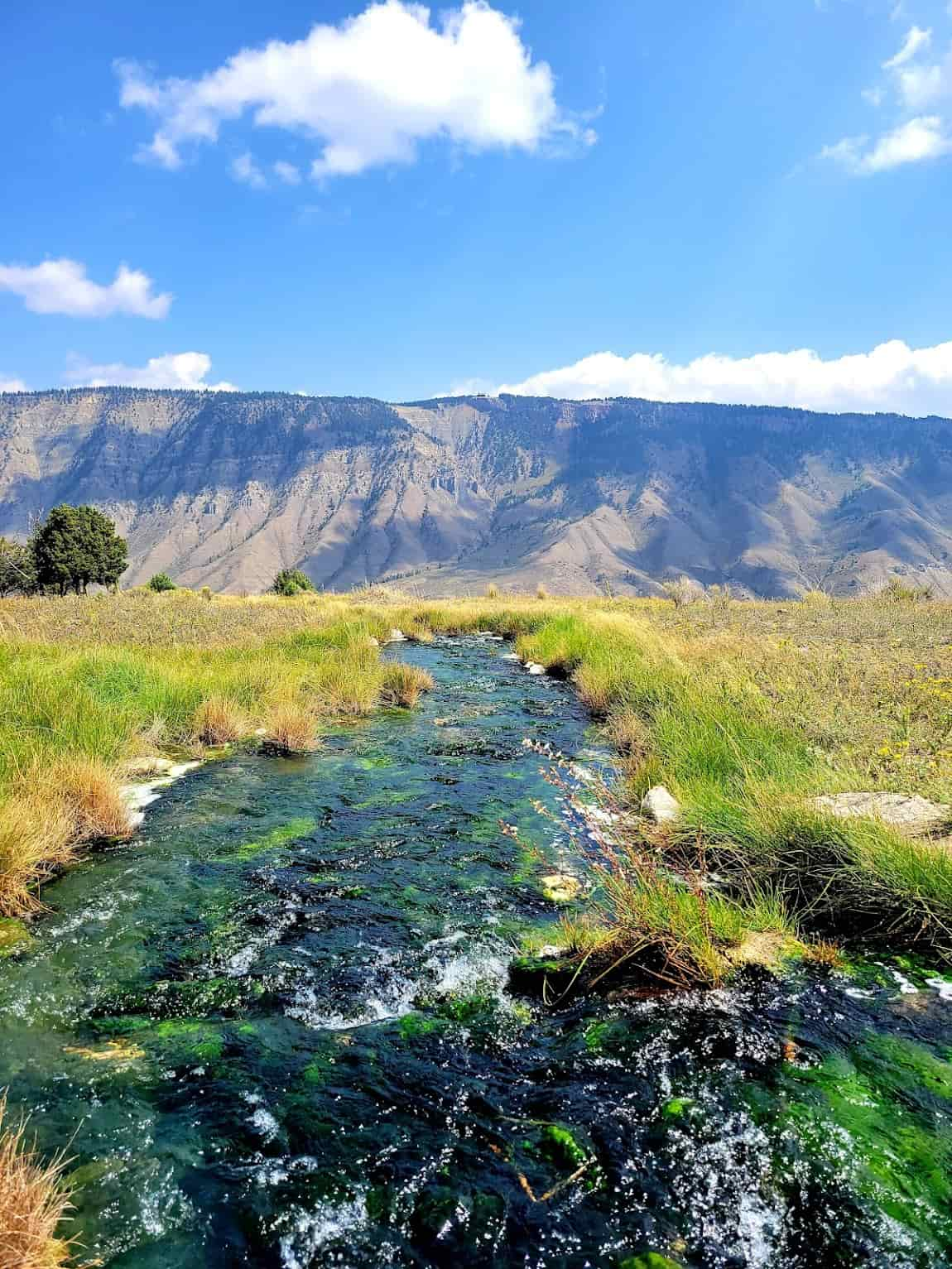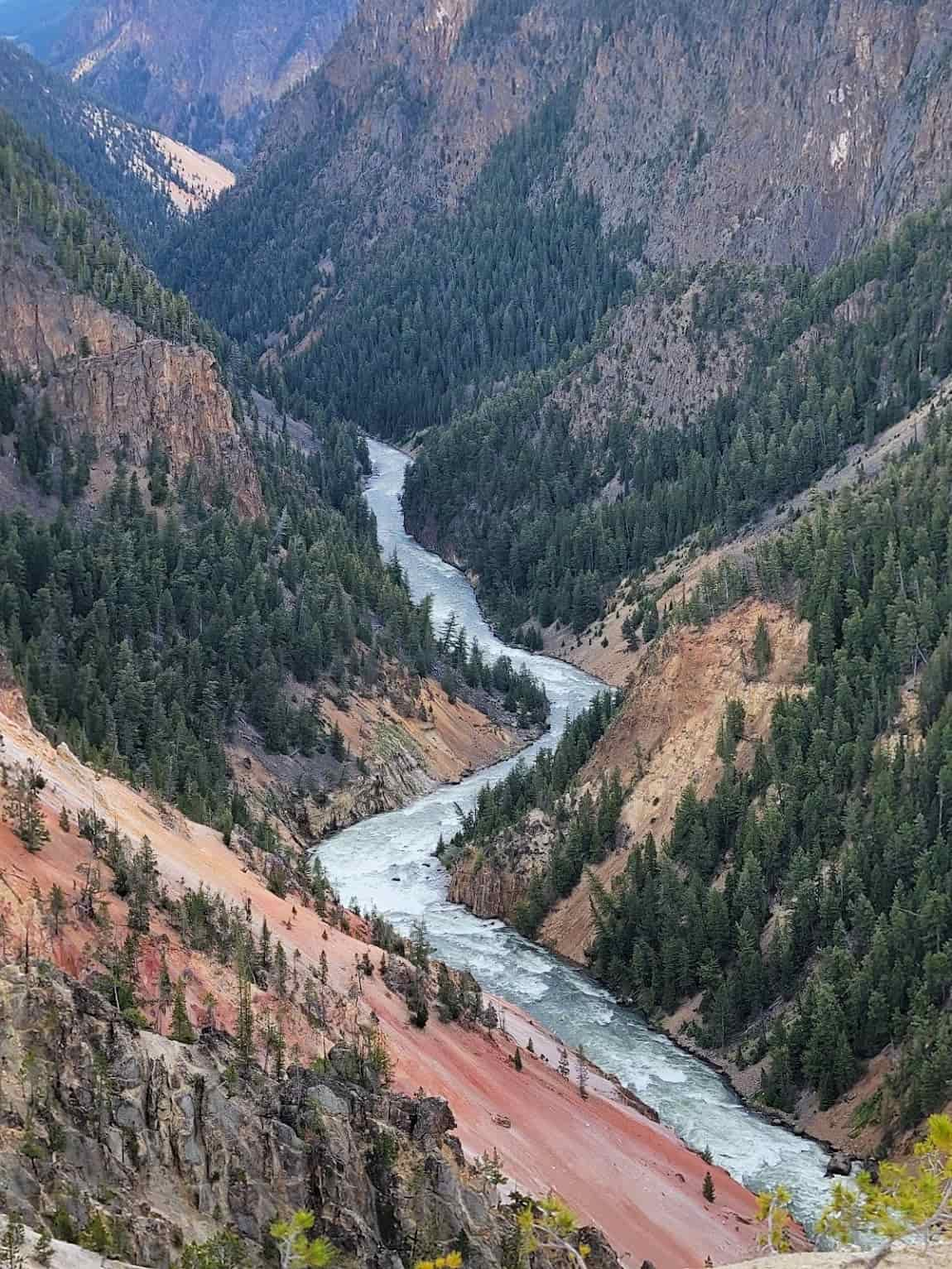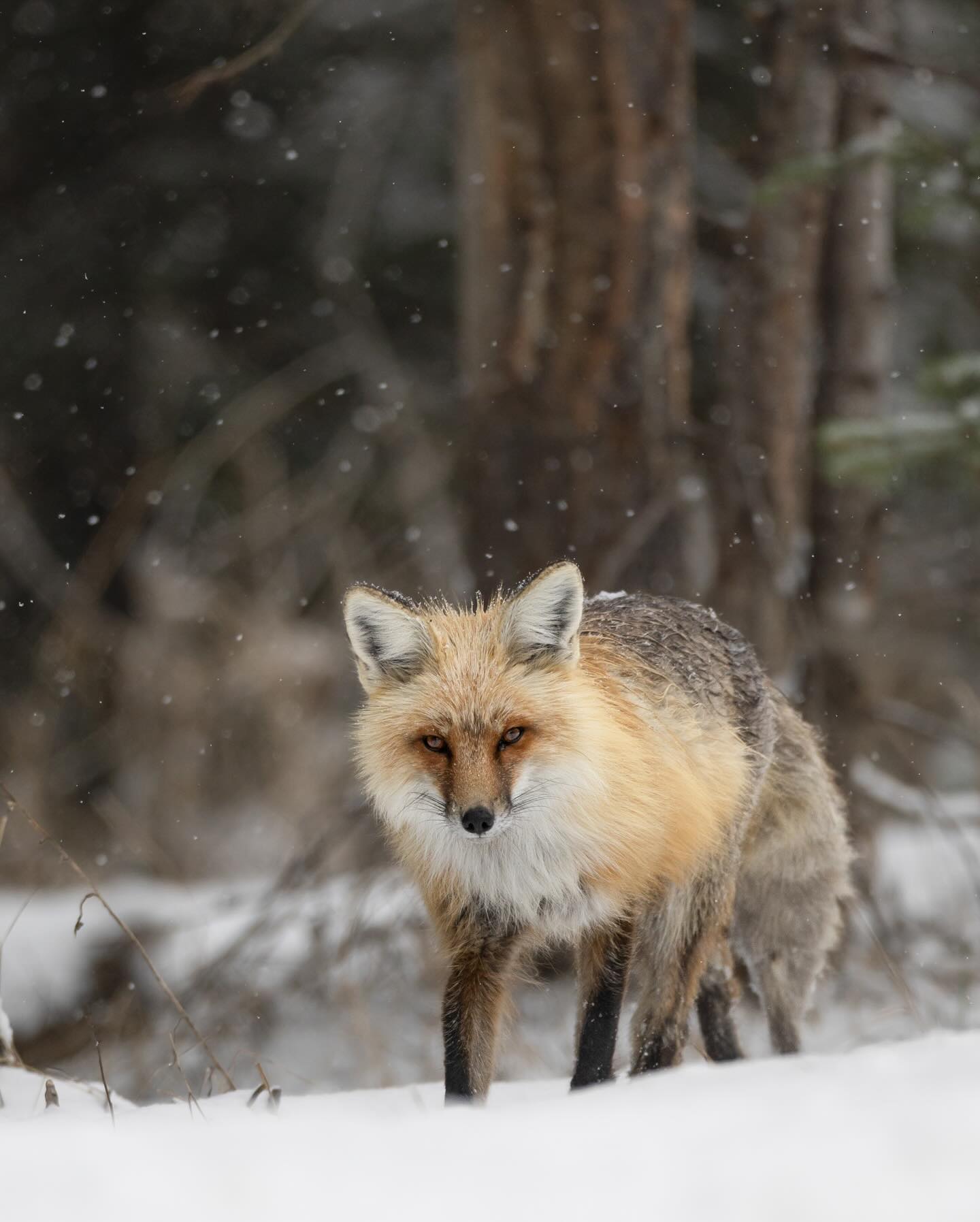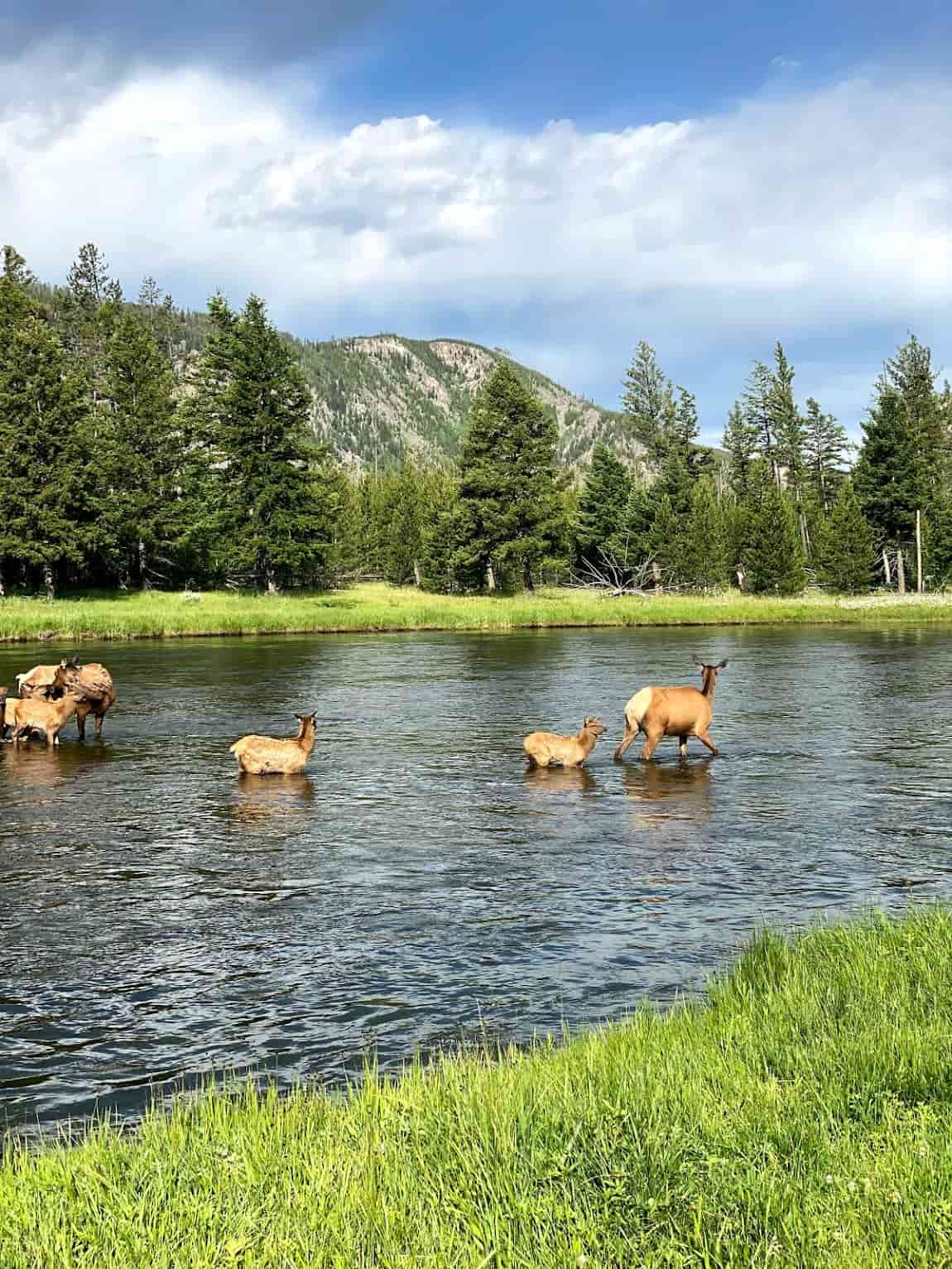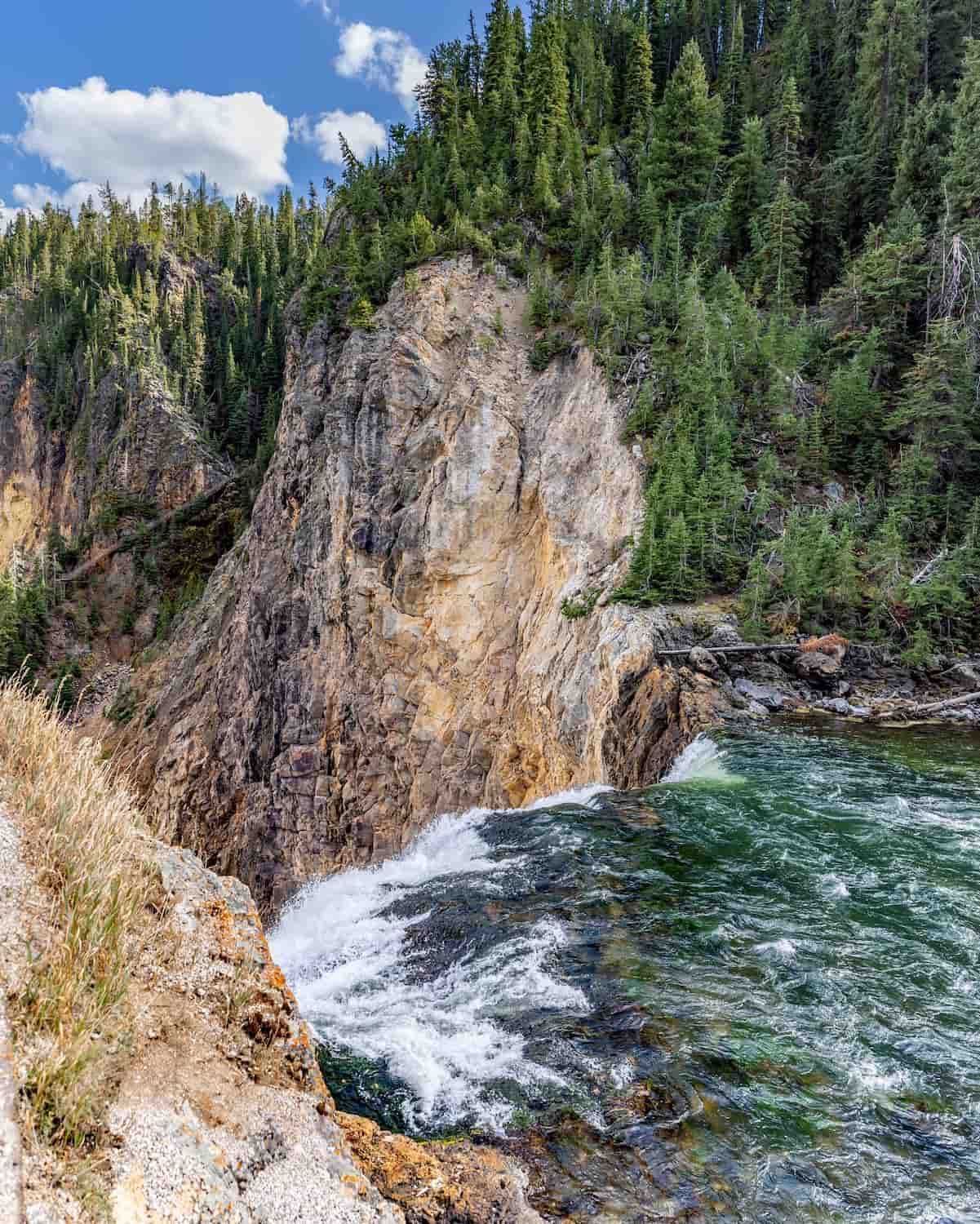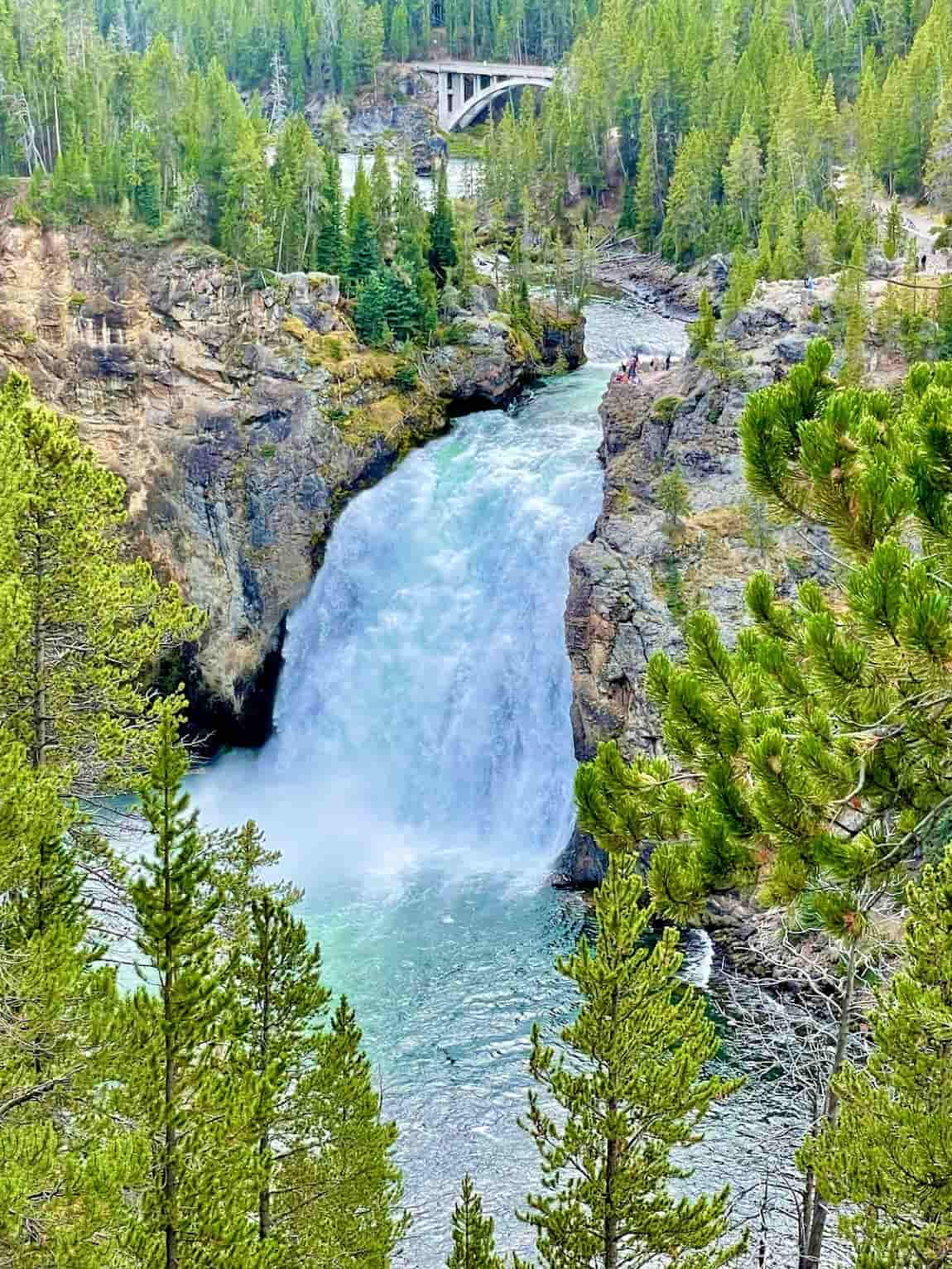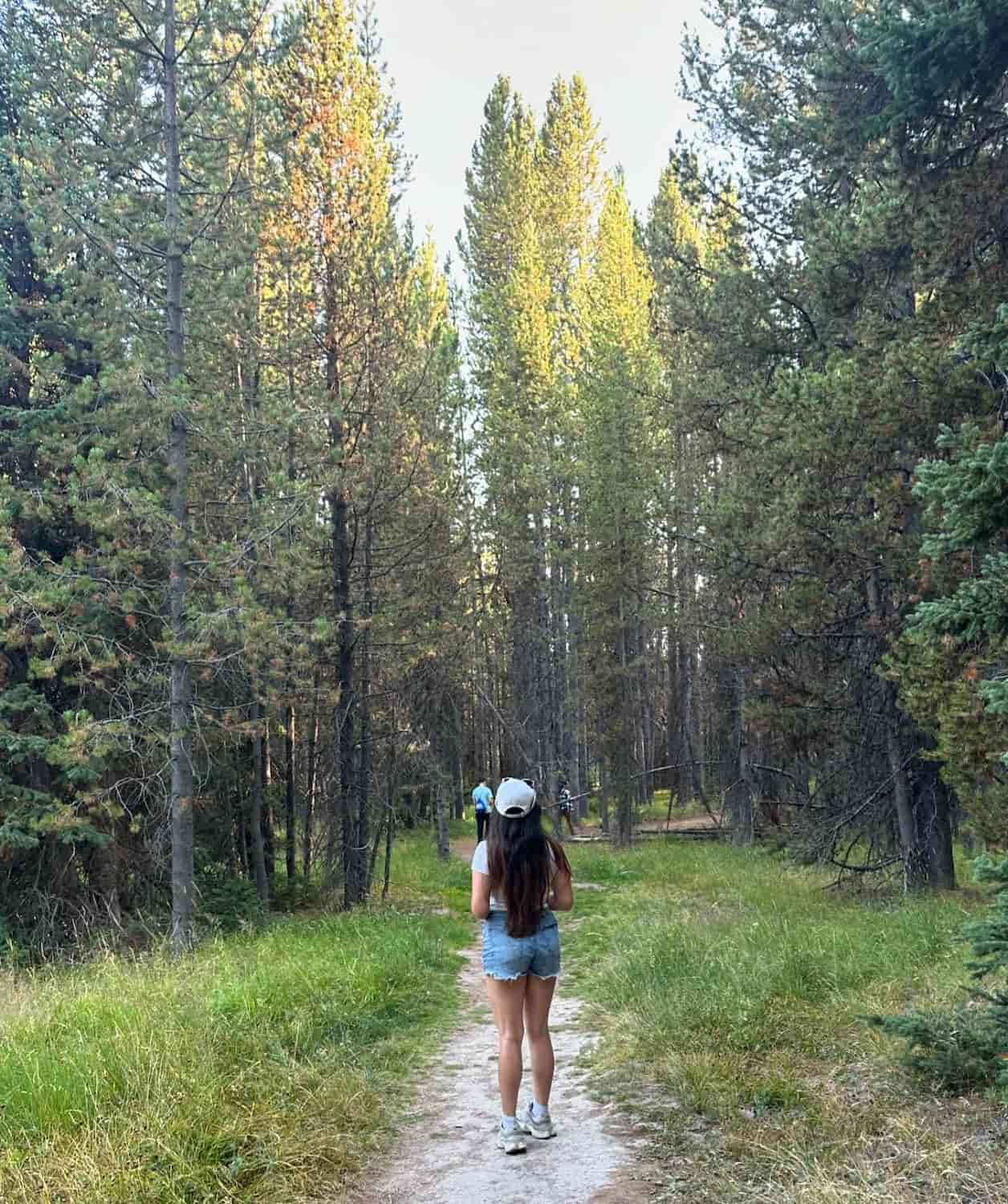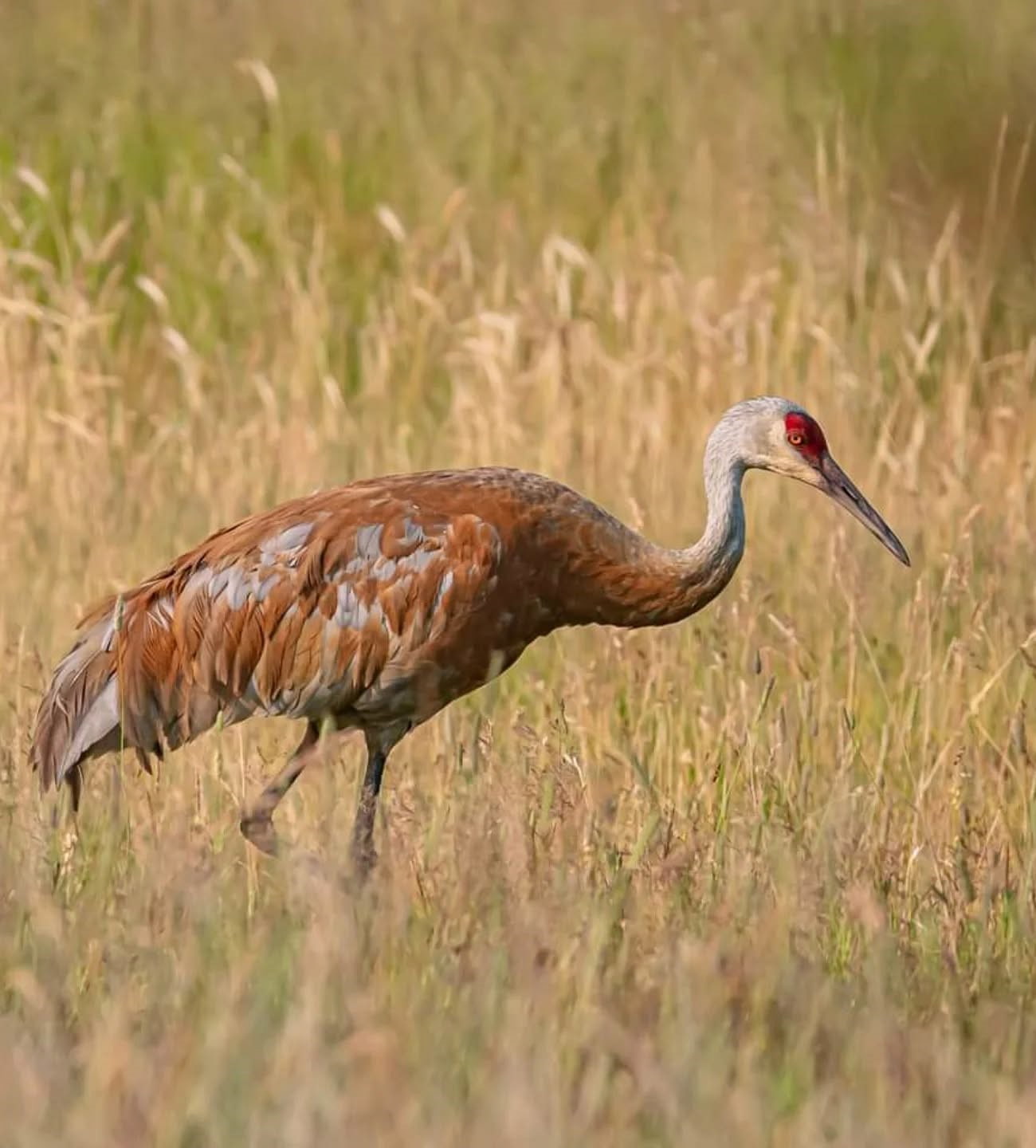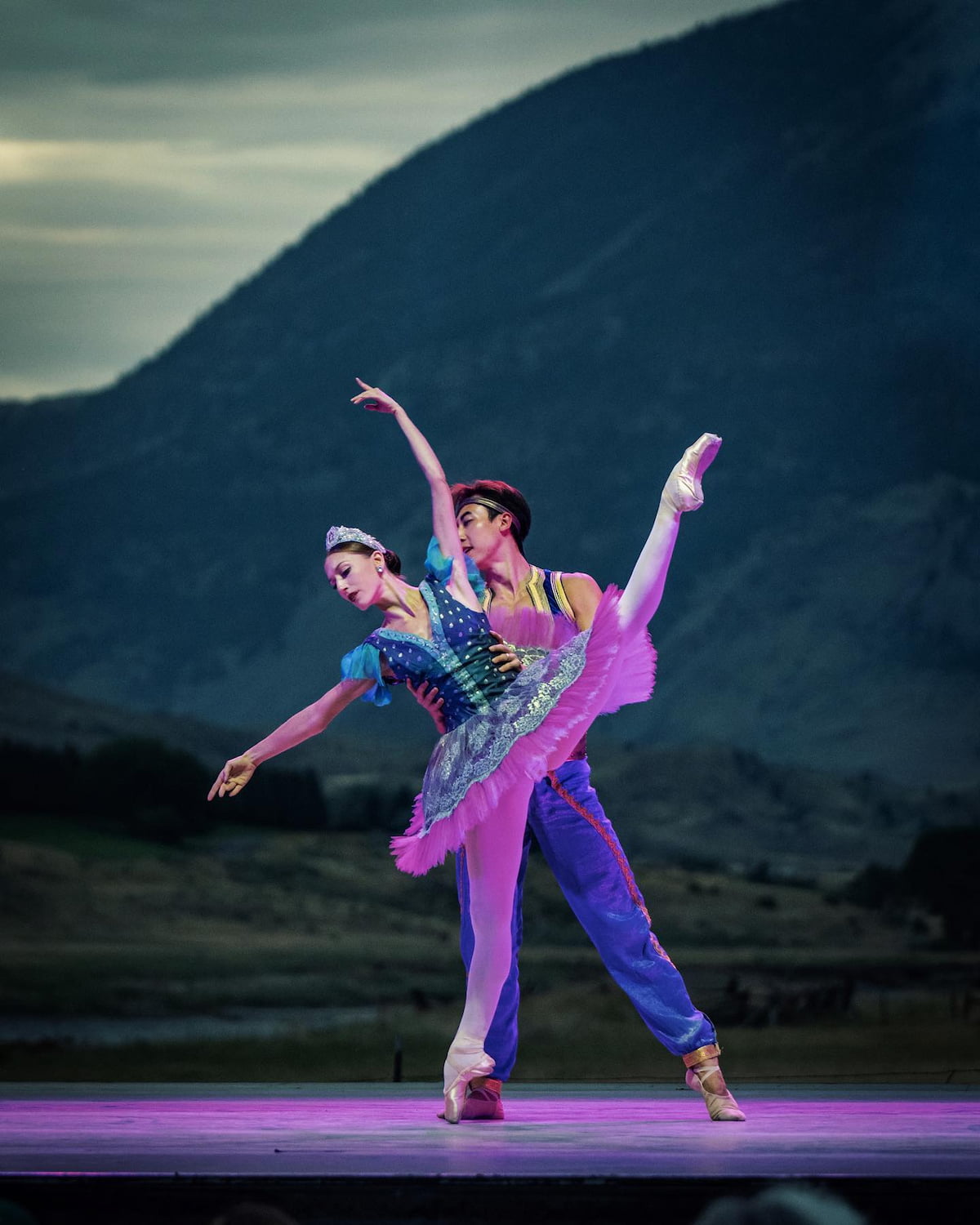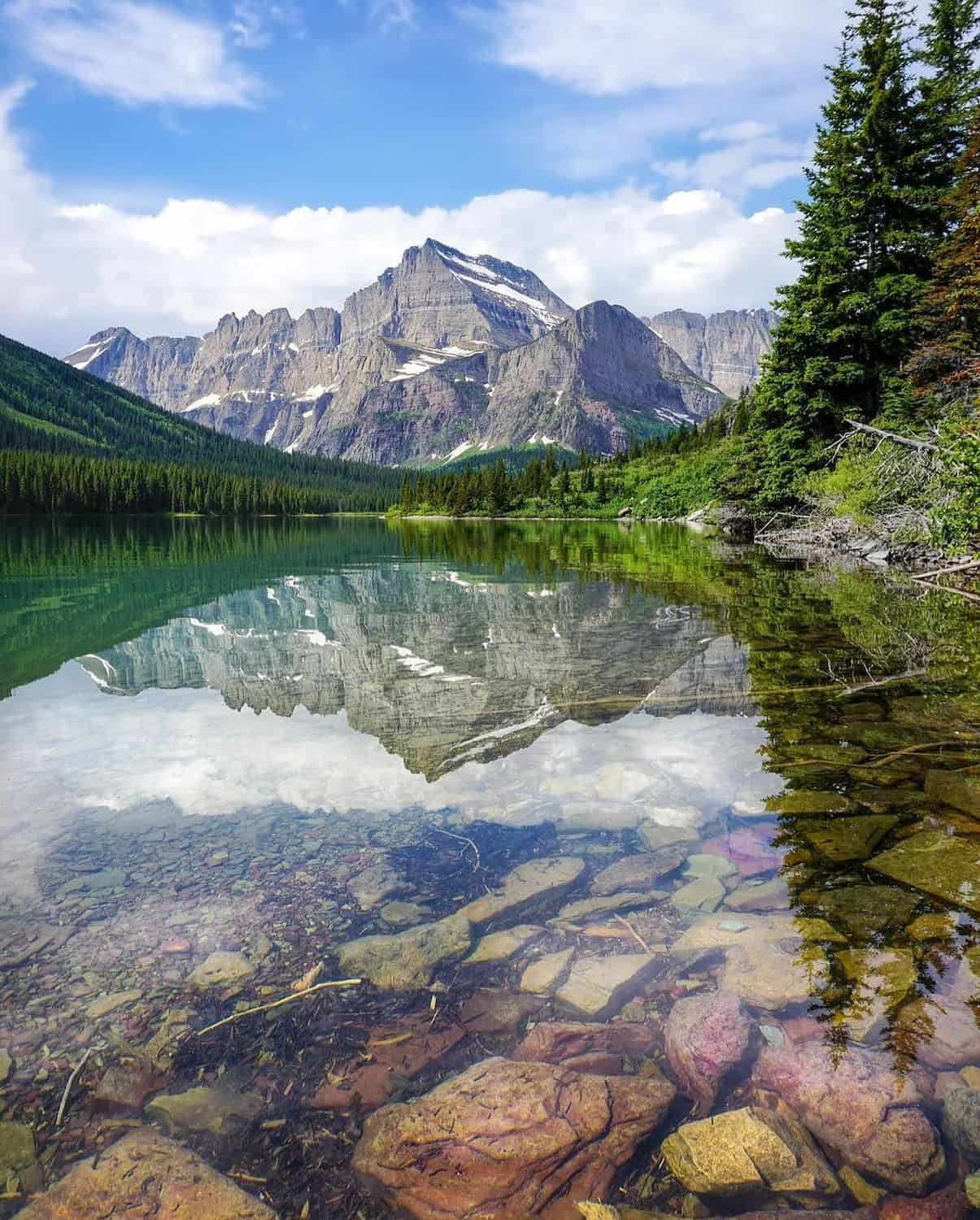Yellowstone, the world’s first national park, is a treasure trove of natural wonders that captivates visitors year-round. From the awe-inspiring Grand Canyon of the Yellowstone to the diverse wildlife that roams freely within the park, there’s always something extraordinary to experience in Yellowstone. However, the time of year you choose to visit can significantly impact your experience, influencing everything from the accessibility of roads in Yellowstone to the types of activities available.
Deciding on the best time to visit Yellowstone depends on what you want to see and do in the park. Each season offers a unique perspective on this natural wonderland, from the vibrant renewal of spring to the snowy serenity of the winter season. Summer draws the most visitors with its warm weather and full accessibility, while fall in Yellowstone offers a quieter experience with stunning foliage. Winter is the best time for those seeking solitude and a chance to see wolves, while spring brings the excitement of newborn wildlife.
🏡 Where to Stay in Yellowstone
- ✨ 5-Star: Montage Big Sky
- 🏨 4-Star: The Cloudveil, Autograph Collection
- 🛏️ 3-Star: The Cody
- 💸 Cheap: Yellowstone's Treasure Cabins
- 🏢 Apartment: The Aspen Condos
- 👨👩👧👦 For Families: Dreamcatcher Tipi Hotel
- 🏩 For Couples: Inn on The Creek
👩🏫 Top-Rated Yellowstone Tours
- Full-Day Guided Yellowstone Day Tour: This comprehensive tour covers the park’s iconic sites, wildlife viewing opportunities, and natural wonders. Perfect for first-time visitors wanting to see the highlights in one day. https://www.viator.com/tours/Yellowstone-National-Park/Full-Day-Guided-Yellowstone-Day-Tour/d22411-316119P4
- Private All-Day Tour of Yellowstone National Park: A customizable private tour that allows you to explore Yellowstone at your own pace. Ideal for families or small groups seeking a personalized experience. https://www.viator.com/tours/Jackson/Yellowstone-Day-Tour/d51006-128842P2
- Private Yellowstone Tour: ICONIC Sites, Wildlife, Family Friendly Hikes + lunch: This tour combines sightseeing with family-friendly hikes and wildlife spotting. Includes a picnic lunch, making it great for active travelers and nature enthusiasts. https://www.viator.com/tours/West-Yellowstone/Private-Tours-of-Yellowstone-National-Park-Gourmet-picnic-lunch-included/d50636-151830P1
- Grand Canyon of the Yellowstone Rim and Loop Hike with Lunch: A guided hike focusing on the spectacular Grand Canyon of Yellowstone. Includes lunch and is suitable for those looking for a more active adventure. https://www.viator.com/en-AU/tours/Yellowstone-National-Park/Yellowstone-Hiking-Tour/d22411-23667P1
- Lake Yellowstone Half Day Kayak Tours Past Geothermal Features: An unique way to experience Yellowstone’s geothermal features from the water. Great for adventure seekers and those wanting a different perspective of the park. https://www.viator.com/tours/Yellowstone-National-Park/Lake-Yellowstone-Half-Day-Kayak-Tours-past-geothermal-features/d22411-175241P10
- VIP Private Boutique Tour of Yellowstone’s Lower Loop: A luxurious private tour of Yellowstone’s Lower Loop, offering a more intimate and exclusive experience of the park’s main attractions. https://www.viator.com/tours/West-Yellowstone/VIP-Jeep-Safari-of-Yellowstone-Max-of-4-People/d50636-232058P50
- Yellowstone Wildlife Sightseeing Tour: Focused on wildlife viewing, this tour is perfect for animal lovers and photographers hoping to spot Yellowstone’s diverse fauna in their natural habitat. https://www.viator.com/tours/Idaho/Private-Yellowstone-Wildlife-Tour/d22215-137381P3
1. Best Seasons to Visit Yellowstone
Spring (March to May)
🌱 Spring awakening: Spring in Yellowstone is a time of rebirth and surprises. I love watching the park come alive as winter’s grip loosens. Wildlife sightings are abundant, with newborn bison calves wobbling alongside their mothers and bears emerging from hibernation.
Weather:
- Temperatures range from the 30s to 60s°F during the day, dropping to teens or single digits at night.
- Snow is still common, with possible accumulations of up to 12 inches in 24 hours.
- Conditions can be winter-like, especially in March and early April.
Activities:
- Wildlife watching is excellent, especially in Lamar Valley.
- Spring bicycling is possible on some roads before they open to vehicles.
- Hiking options increase as snow melts, but some trails may still be snow-covered.
- Potential for unique photography opportunities with snow-capped landscapes and baby animals.
Top Tip: Late May is your sweet spot for balancing accessibility with smaller crowds.
Summer (June to August)
☀️ Summer buzz: Summer is Yellowstone’s showtime, and for good reason. The weather is warm, all park facilities are open, and the landscape is in full bloom. It’s the perfect time for hiking, camping, and exploring the park’s diverse ecosystems.
Insider Tip: To avoid the peak crowds, aim for early June or late August.
During my summer visits, I’ve enjoyed:
- Watching Old Faithful erupt in all its glory.
- Hiking the colorful Grand Canyon of Yellowstone.
- Kayaking on the serene Yellowstone Lake.
- Spotting diverse wildlife in the Lamar Valley.
Fall (September to November)
🍂 Autumn magic: Fall is my personal favorite time to visit Yellowstone. The changing foliage paints the landscape in vibrant hues, wildlife is active, and the crowds have thinned out. September and early October offer pleasant weather for hiking and wildlife viewing.
Weather:
- Temperatures typically range from 20°F to 65°F (-6°C to 18°C).
- September is milder, with highs around 64°F (18°C) and lows around 30°F (-1°C).
- October and November get progressively colder.
- Be prepared for rapid temperature drops after sunset.
Activities:
- Hiking is excellent in fall, with cooler temperatures and beautiful scenery.
- Fishing can be particularly good, especially for brown trout.
- Biking is possible on certain roads in November when they’re closed to vehicles
Money Saver: Accommodation prices often drop after Labor Day.
Winter (December to February)
❄️ Winter wonderland: Winter transforms Yellowstone into a snow-covered wonderland. While many roads are closed to regular traffic, this season offers unique experiences you won’t find any other time of year.
In my winter adventures, I’ve enjoyed:
- Snowmobiling through frosty landscapes.
- Cross-country skiing in pristine wilderness.
- Watching geysers erupt amidst steam and snow.
- Spotting wolves against the white backdrop.
Time Saver: Winter wildlife tours can help you maximize animal sightings in the limited daylight hours.
🏞️ Year-round beauty: Remember, each season in Yellowstone has its own magic. Whether you’re seeking solitude in the snow-covered backcountry or the buzz of summer activities, Yellowstone never disappoints. Just be sure to pack appropriately and respect the park’s wild inhabitants – after all, we’re guests in their home.
2. Regions
Northern Yellowstone
🦅 Wildlife haven: The northern region, including Mammoth Hot Springs, is a year-round wildlife watcher’s paradise. I’ve spent countless hours in the Lamar Valley, nicknamed “America’s Serengeti,” watching herds of bison roam and hoping to spot elusive wolves.
Highlights:
- Known as a wildlife haven, especially in the Lamar Valley (nicknamed “America’s Serengeti”).
- Home to Mammoth Hot Springs, featuring unique terraced limestone formations.
- Includes the North Entrance at Gardiner, Montana – the only entrance open year-round.
- Best area for spotting wolves, especially around dawn and dusk.
- Popular for wildlife viewing, including bison, elk, bears, and bighorn sheep.
- Offers scenic drives like the route from Gardiner to Cooke City.
Insider Tip: Early morning and late afternoon are prime times for wildlife viewing. Bring binoculars!
Central Yellowstone
🌋 Geyser central: This is where you’ll find the park’s most famous attractions. I never tire of watching Old Faithful erupt or marveling at the rainbow-hued Grand Prismatic Spring. The Grand Canyon of Yellowstone is a must-see – its golden cliffs and thundering waterfalls are truly breathtaking.
Highlights:
- Features some of the park’s most famous attractions.
- Home to Old Faithful geyser and the Upper Geyser Basin.
- Includes the Grand Canyon of Yellowstone with its stunning waterfalls and colorful cliffs.
- Contains the Grand Prismatic Spring, known for its vibrant colors.
- Offers numerous hiking trails and boardwalks for exploring geothermal features.
Time Saver: Visit popular geysers early in the morning or later in the evening to avoid the biggest crowds.
Southern Yellowstone
🏞️ Lake life: Home to the vast Yellowstone Lake, this region offers a different pace. I love kayaking on the lake’s crystal-clear waters, surrounded by pristine wilderness. The Hayden Valley is another wildlife hotspot – I’ve seen everything from grizzly bears to trumpeter swans here.
Highlights:
- Dominated by Yellowstone Lake, the largest high-elevation lake in North America.
- Offers many hiking trails, hot springs, and geothermal features around the lake.
- Home to the Hayden Valley, another excellent area for wildlife viewing.
- Includes West Thumb Geyser Basin on the shore of Yellowstone Lake.
- Generally less crowded than the central and northern regions.
Money Saver: Bring your own picnic to enjoy by the lake. The views are better than any restaurant!
3. Best Times for Specific Experiences
Avoiding Crowds
🌅 Early bird wins: The single best way to beat the crowds is to start your day early. I’m talking sunrise early! I’ve had magical experiences watching Old Faithful erupt in the soft morning light with just a handful of other early risers. Most visitors don’t arrive until after 9 AM, so those first few hours of the day are golden.
🥾 Hit the trails: While popular boardwalks and viewpoints get packed, I’ve found that even a short hike can lead you to relative solitude. Over 97% of visitors never venture more than half a mile from their cars. Strap on those hiking boots and you’ll be rewarded with crowd-free vistas.
🍂 Embrace the shoulder season: My favorite times to visit are late May/early June or September/early October. You’ll enjoy milder weather, fall colors or spring wildflowers, and significantly fewer people than during peak summer months.
Insider Tips:
- Visit popular thermal areas like Grand Prismatic Spring in the early evening when most tour buses have left for the day.
- Explore the park’s northern loop, which tends to be less crowded than the geyser-heavy southern loop.
- Consider a winter visit for a truly unique and crowd-free experience (though services are limited).
Ideal Weather
🌞 Summer sweet spot: Generally, summer (mid-June through early September) offers the most dependable and pleasant weather in Yellowstone. Here’s why it’s considered ideal:
- Temperatures are mild and comfortable, with highs typically in the 70s-80s°F (25-30°C) during the day.
- Nights are cool but not freezing, with lows usually in the 30s-40s°F (0-10°C).
- It’s the driest season, though afternoon thunderstorms can occur.
- All park facilities and roads are open, allowing full access to attractions.
However, keep in mind that summer is also the busiest season in the park.
🍂 Fall favorite: Many consider early fall (September to early October) to be an ideal time to visit:
- The weather is still pleasant, with daytime highs in the 60s-70s°F (15-25°C).
- Crowds thin out after Labor Day.
- Fall colors add beauty to the landscape.
- Wildlife is active during the “rut” season.
🌼 Late spring option: Late May to early June can also offer good weather:
- Temperatures start to warm up, with highs in the 50s-60s°F (10-20°C).
- Spring wildlife activity is in full swing.
- Crowds are smaller than in peak summer.
Insider Tips:
- Weather in Yellowstone can be unpredictable at any time of year. Always be prepared for sudden changes.
- Dress in layers to adapt to temperature fluctuations throughout the day.
- Higher elevations tend to be cooler, so adjust expectations based on where you’ll be in the park.
- Even in summer, nights can be chilly, so pack warm clothing.
Wildlife Viewing
🐻 Animal encounters: Spring and fall are my go-to seasons for wildlife. In spring, I’ve watched adorable bear cubs take their first steps. Fall brings the elk rut – hearing bull elk bugle across the valleys is an unforgettable experience.
Time Saver: Join a guided wildlife tour. Local experts know the best spots and can help you spot animals you might miss on your own.
Cultural Events and Festivals
🏞️ Voices of Yellowstone: This is one of the most significant annual events in Yellowstone, typically held in early August. This week-long celebration honors the diverse cultures of Indigenous Peoples connected to Yellowstone. Here’s what you can expect:
- Opening ceremony with blessing and drumming.
- Illuminated teepees display.
- Cultural demonstrations.
- Indigenous art market.
- Native games night.
- Cultural tours.
- Community potluck.
- Closing ceremony with guest speakers and drum circle.
🌟 The Illuminated Teepees Project: This stunning display is part of the Voices of Yellowstone celebration and has become an annual tradition. The teepees are illuminated each evening during the event week, creating a breathtaking sight that tells stories rooted in tribal history and contemporary issues.
🎨 Yellowstone Tribal Heritage Center: While not a single event, this center operates throughout the summer season annually. It features rotating presentations by Indigenous artists and scholars from the 27 associated Tribes of Yellowstone. You can catch demonstrations of traditional crafts, storytelling sessions, and cultural presentations.
🦅 Native American Heritage Month: Every November, Yellowstone celebrates Native American Heritage Month with various events and educational programs. While specific activities may vary year to year, this is always a great time to learn about Native American cultures and their deep connections to Yellowstone.
🎭 Yellowstone International Arts Festival: This annual celebration of arts and culture typically includes performances and events that highlight the cultural heritage of the Yellowstone region. While dates can vary, it’s usually held in the summer months.
Insider Tip: These events offer a fantastic opportunity to see Yellowstone through a different lens. I always recommend visitors plan their trip around one of these cultural celebrations if possible. It adds a whole new dimension to the Yellowstone experience, connecting you with the human stories that have shaped this incredible landscape for thousands of years.
4. Month-by-Month Guide
🗓️ Year-round wonders: Each month in Yellowstone offers something unique:
🌨️ January & February: Winter Wonderland
- Average highs: 28°F (-2°C).
- Highlights: Snow-covered landscapes, wolf watching, steaming geysers against snowy backdrops.
- Insider Tip: Book a snowmobile or snowcoach tour for a magical winter experience.
🌱 March & April: Spring Awakening
- Average highs: 37-46°F (3-8°C).
- Highlights: Baby bison sightings, bears emerging from hibernation, fewer crowds.
- Insider Tip: Be prepared for unpredictable weather and limited services.
🌸 May: Blooming Season
- Average highs: 58°F (14°C).
- Highlights: Wildflowers, wildlife babies (elk calves, bear cubs), most roads reopening.
- Insider Tip: Late May is perfect for balancing good weather and smaller crowds.
☀️ June: Early Summer Sweet Spot
- Average highs: 68°F (20°C).
- Highlights: All facilities open, great hiking weather, abundant wildlife activity.
- Insider Tip: Visit early in the month to avoid peak summer crowds.
🏞️ July & August: Peak Summer
- Average highs: 76-78°F (24-26°C).
- Highlights: Warm weather, all services available, excellent hiking conditions.
- Insider Tip: Start your days early to beat the crowds and the heat.
🍂 September & October: Fall Colors
- Average highs: 51-64°F (11-18°C).
- Highlights: Autumn foliage, elk rutting season, fewer crowds.
- Insider Tip: September is often considered the best month to visit for a balance of good weather and smaller crowds.
❄️ November & December: Winter’s Arrival
- Average highs: 34-37°F (1-3°C).
- Highlights: First snowfalls, wildlife easier to spot against snow, holiday atmosphere.
- Insider Tip: Many facilities close, but it’s a magical time if you’re prepared for winter conditions.
5. Combining Yellowstone with Other Destinations
Yellowstone and Grand Teton
🏔️ Mountain magic: I’ve found that early September is the sweet spot for combining these two stunning parks. The weather is typically gorgeous, and the crowds have thinned out. You can start your day watching Old Faithful erupt in Yellowstone and end it gazing at the Teton range reflected in Jenny Lake.
Yellowstone and Grand Teton National Parks:
- These two parks are right next to each other, connected by the John D. Rockefeller Jr. Memorial Parkway. It’s very easy to visit both on one trip.
- A popular itinerary is to spend 4-5 days in Yellowstone and 2-3 days in Grand Teton.
- You can enter Grand Teton through Yellowstone’s South Entrance. The drive between the main areas of the parks (like Old Faithful to Jenny Lake) takes about 1 hour.
- Many people start in Jackson Hole, visit Grand Teton, then head north to Yellowstone.
- The best time to visit both parks is mid-June to early October when all roads and facilities are open. September is ideal for fewer crowds.
Time Saver: The John D. Rockefeller Jr. Memorial Parkway connects the two parks, making for an easy and scenic drive.
Yellowstone and Glacier National Park
🚗 Road trip adventure: For the ultimate Montana-Wyoming adventure, I recommend visiting both parks in summer (June to August). This is when all facilities are open and the weather is most favorable for outdoor activities.
Yellowstone and Glacier National Park:
- These parks are further apart, about a 6-7 hour drive between them.
- You’ll want at least 10 days to comfortably visit both parks.
- The best time to combine them is summer (June-August) when all facilities are open in both parks.
- You could fly into one park and out of the other for a one-way road trip.
- Consider stopping in charming small towns like Missoula or Bozeman along the drive between parks.
Insider Tip: The drive between the parks is about 6 hours. Break it up with a stop in Missoula or Bozeman for a taste of Montana’s charming small cities.
The Best Time to Visit Yellowstone
Yellowstone is a place that never fails to amaze me, no matter when I visit. Each season brings its own unique charm and experiences. Whether you’re watching bison calves frolic in spring, hiking under the summer sun, marveling at fall colors, or spotting wolves against the winter snow, Yellowstone offers something truly special.
❓ FAQ
When is the absolute best time to visit Yellowstone?
In my opinion, it’s mid-May through early June or September to early October. You get a great balance of good weather, open facilities, and fewer crowds.
Is summer a bad time to visit Yellowstone?
Not at all! While it’s the busiest season, it’s also when the weather is best and everything is open. Just be prepared for crowds at popular spots.
Can you visit Yellowstone in winter?
Absolutely! Winter in Yellowstone is magical. You can go snowmobiling, cross-country skiing, and see geysers erupting amidst the snow. Just remember, access is limited to certain areas of the park.
What’s the best time for wildlife viewing?
I’ve had the best luck in spring and fall. Animals are more active and visible as they prepare for summer or winter.
When is the park least crowded?
Winter is definitely the quietest time. If you prefer warmer weather, try early spring or late fall.






